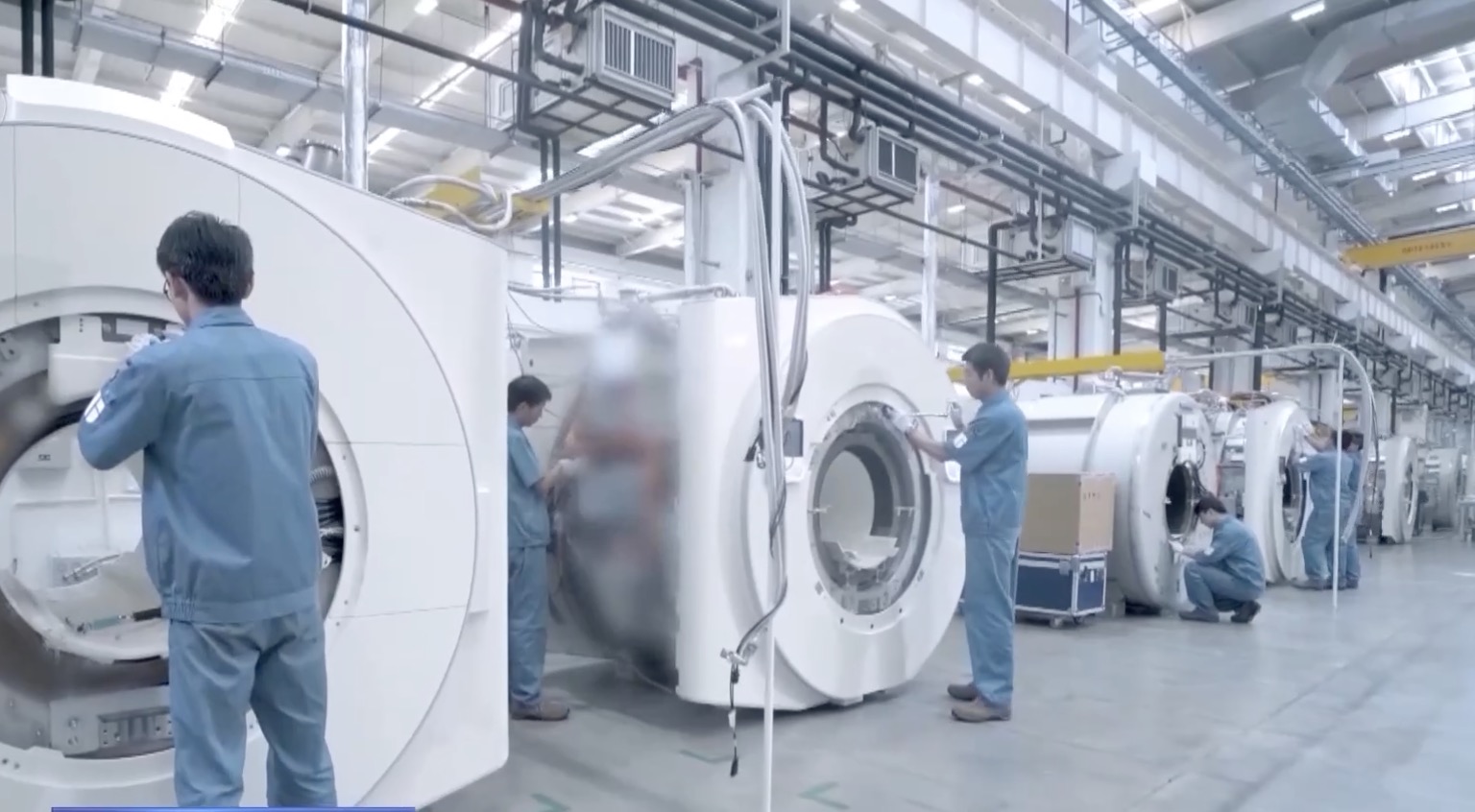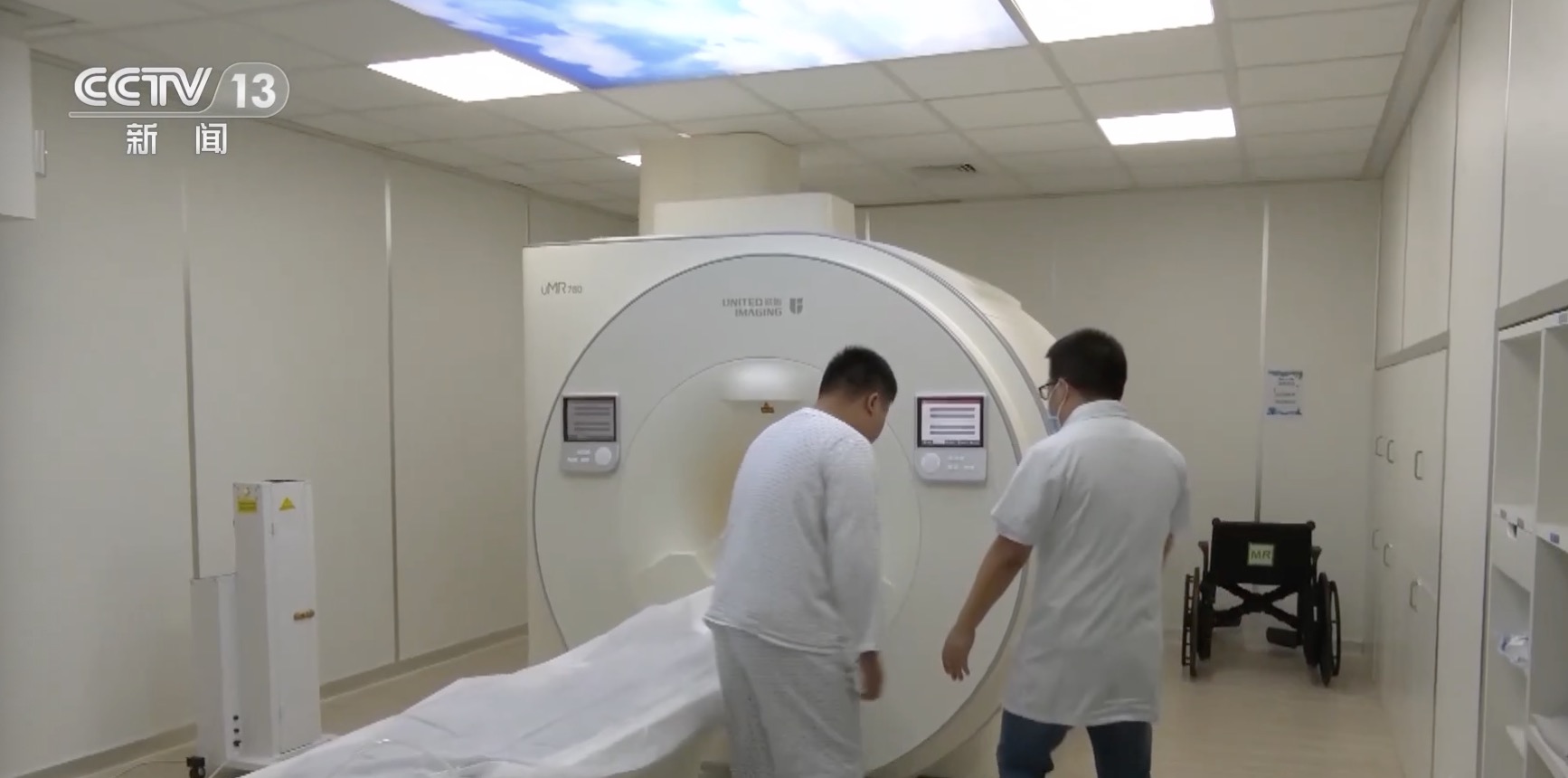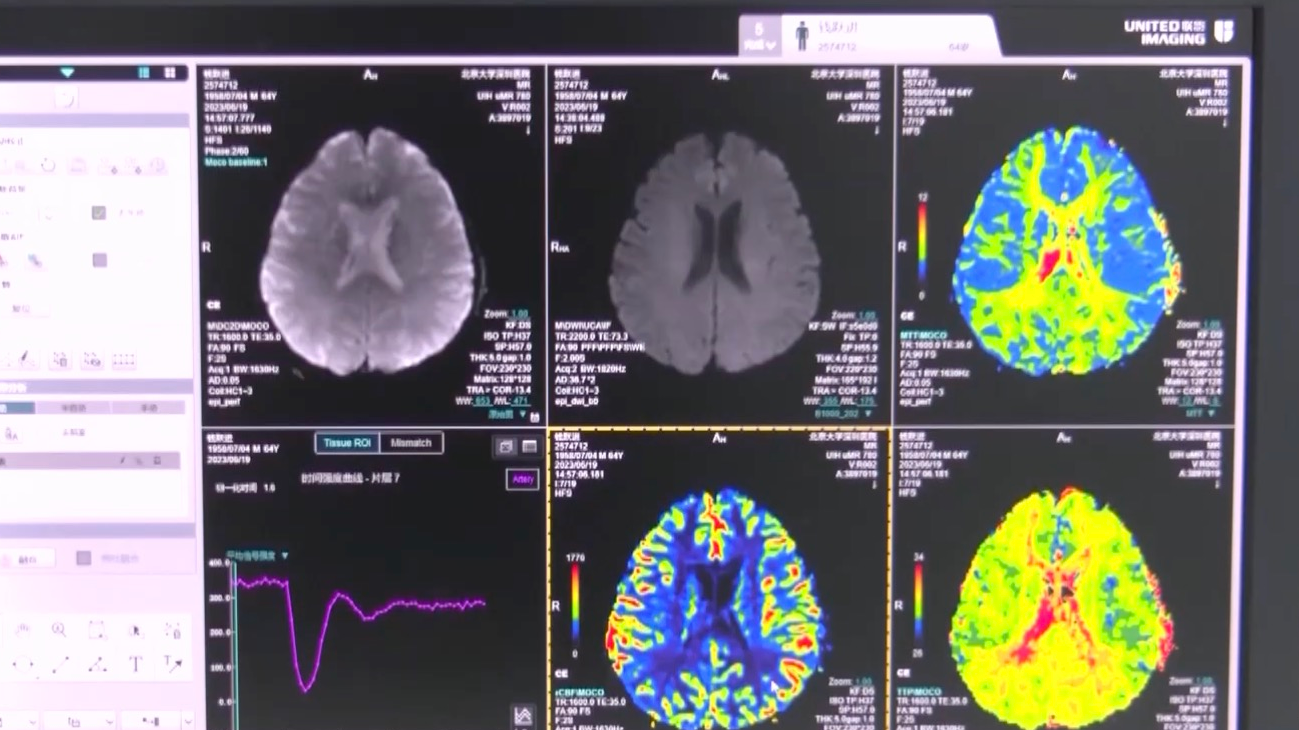
Workers at a production line of China's self-developed magnetic resonance imaging (MRI) device at Shenzhen Institute of Advanced Technology, Chinese Academy of Sciences, Shenzhen City, Guangdong Province, south China. /CMG
Workers at a production line of China's self-developed magnetic resonance imaging (MRI) device at Shenzhen Institute of Advanced Technology, Chinese Academy of Sciences, Shenzhen City, Guangdong Province, south China. /CMG
China's self-developed magnetic resonance imaging (MRI) scanner has entered mass production, breaking long-standing foreign technological monopoly and lowering medical service fees for patients in the country.
Developed by researchers from the Shenzhen Institute of Advanced Technology (SIAT), Chinese Academy of Sciences, the imaging device has been used at Peking University Shenzhen Hospital.
"The image quality is not inferior to that of international advanced producers, while the price is greatly reduced. It will largely reduce fees for the public to see doctors," Zhang Hui, the deputy chief technician at Medical Imaging Department of Peking University Shenzhen Hospital, told China Media Group (CMG).

A patient is readied for scanning by China's self-developed MRI device at Peking University Shenzhen Hospital, Shenzhen City, Guangdong Province, south China. /CMG
A patient is readied for scanning by China's self-developed MRI device at Peking University Shenzhen Hospital, Shenzhen City, Guangdong Province, south China. /CMG
Comparing tumor images taken by the scanner with those of some old devices, researchers concluded that the MRI device not only provides relatively high-contrast and high-resolution images, but also operates at a faster speed, allowing doctors to capture more accurate movement of the targets.
Li Ye, deputy director at the Institute of Biomedical and Health Engineering, SIAT, told CMG, "The old MRI process was like taking photos, through which the image was taken one by one. If the target moves a little, the final image would become indistinct."
"Now, with such a fast imaging technology, the process is more like making movies. We don't need to worry about a moving tissue, as we can see how it moves when it does."

A computer screen shows tumor images taken by China's self-developed MRI scanner. /CMG
A computer screen shows tumor images taken by China's self-developed MRI scanner. /CMG
SIAT's success lies in governmental input and early-stage industrial integration.
In 2022, the institute received 3.3 billion yuan (about $458 million) in funding – 17 percent from fixed funds from governmental departments and 83 percent from close industrial cooperation.
Mentioning the industrial integration, Guo Wanda, the executive head of SIAT, told CMG that their researchers and entrepreneurs are often based in the same building where they can discuss new products or developments directly.
"The working mode definitely removes distance between researchers and market needs. Like neighbors, researchers and entrepreneurs can talk and share ideas."
Thanks to such flexible working style, SIAT has also developed high-end devices other than the MRI instrument, such as non-invasive ultrasound elastography that can provide early screening for liver and breast diseases, and major ultrasound neuromodulation devices developed to provide treatment for Parkinson's disease, epilepsy and Alzheimer's disease which have begun clinical trials.